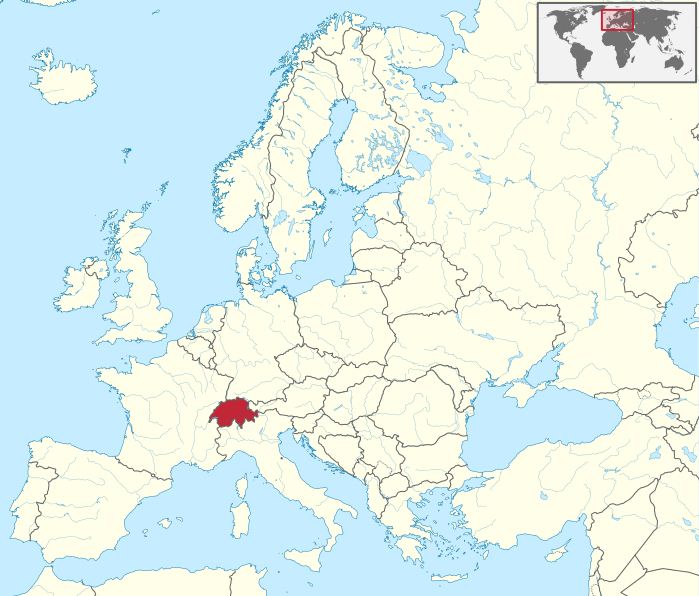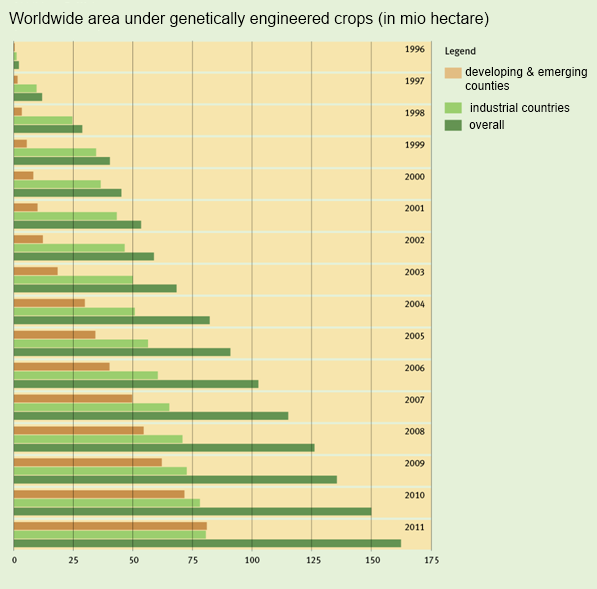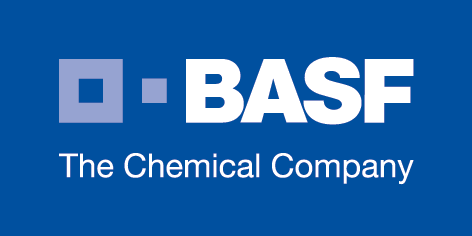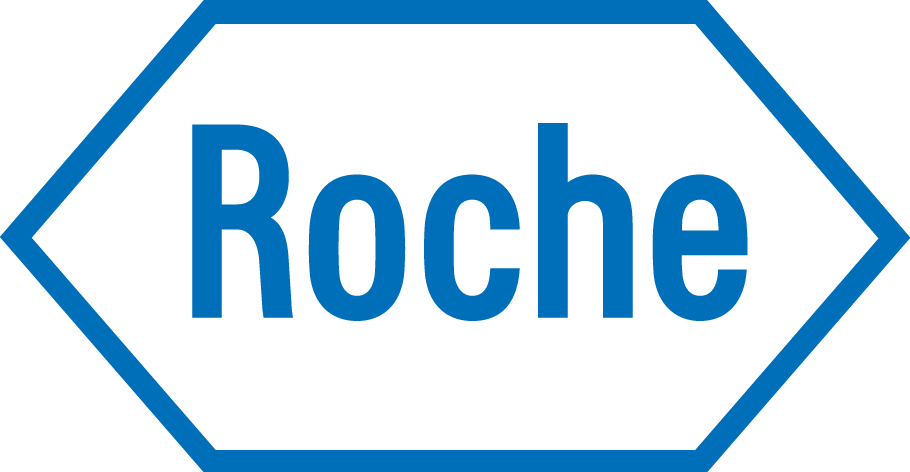Team:ETH Zurich/HumanPractice/NRP59
From 2012.igem.org
Contents |
NRP 59
Introduction
In 2005, the Swiss decided on a five year Moratorium on the commercial use of genetically modified plants (GMP)s in a referendum with 55.7 % of the voters in favor of the moratorium. At the same time, the government conducted a national research program (NRP) with the title ‘Benefits and risks of the deliberate release of genetically modified plants’. The aim of the so called NRP 59 was to do research on safety, benefits and risks of GMP regarding specifically the situation and conditions in Switzerland [1].
In 2010, the moratorium was elongated for three more years until November 2013 to wait for the final results of NRP 59 that should provide a solid scientific basis for a broad public discussion of the topic.
This year, 2012, the NFP 59 published its final results. We want to take the opportunity to let people from other countries know how Switzerland deals with genetically modified plants. To further critically access the results of NFP 59, we talked to two important players that have an impact on Swiss plant biotechnology: Mr. Markus Ritter (link in German, French or Italy), member of the Swiss National Council and head of the swiss farmers’ association and Prof. Ingo Potrykus, who is one of the inventors of 'golden rice'. Both were so kind to answer a few of our questions which answers are included in this essay. Read the English translation as well as the German original of the full interview with Prof. Potrykus and Mr. Markus Ritter.
Background
Worldwide, the use of GMP is very common: 29 countries, 19 of which emerging or developing countries, use mostly genetically modified maize, soy, cotton and sugarcane. With research on other plants, the worldwide use of GMPs is assumed to grow within the next years.
In Europe, over 40 different GMPs are allowed to be used in food for both human and animal. Never the less, the cultivation of GMP is allowed for only two species: maize and starch rich potatoes. Most research was outsourced to other countries for two main reasons: the cost of outdoor experiments and the critical atmospheres towards GMPs: being established 15 years ago; green plant biotechnology is still considered a very modern and mysterious technology in the public opinion. As a paradox, the high demands on safety led to the fact that only a few companies can afford research in GMPs which leads to an undesired monopolization of the field of commercially used GMPs.
Agriculture in Swiss needs to become more efficient, sustainable and ecologically, preferably without an increase of cost, to meet futures demand for food and at the same time maintain a sound environment. GMPs can help to protect nature and environment that can be harmed through extensive agriculture by lowering the use of herbicide and prevent crop failure [2].
Research
The national research program on genetically modified plants focused on many interdisciplinary areas. The research evaluated the relationship between plant biotechnology and environment by looking closer at the impact of resistancies in economic plants, biodiversity and the transfer of genes from GMP to wild type plants. Another focus were political, social and economic aspects that included the role of the media for the formation of the public opinion. Another dealt with the evaluation and management of risks of GMP.
While 5 years are too short to conduct a long term study, the last part was to review published studies on medical issues of GMPs relevant for Switzerland, various aspects of coexistence of natural plants and GMP in crop production and a synthesis of studies on biological issues of GMPs.
Interestingly, throughout the whole project, focus lied also on the communication of the results to the Swiss public and to the politicians, the decision makers.[3]
Results
The results of 5 years of work in 30 projects worth an investment of 12 million Swiss francs (ca. 13 million US dollars) of NFP 59 were published on August 28th and a 300 pages long book was published online on September 11th in German and French and later, on September 21st in English.
The results of the NRP stated that there is no or very little risk of GMP for health and environment. At the same time, specifically for Switzerland, the benefit of using GMPs is low as well given today’s circumstances. Never the less, with new breakthroughs in research, the benefit of GMPs could increase, making them more attractive for Switzerland. From the analysis of over thousand studies from worldwide research about GMPs, no risks could be concluded. Any problems that occurred are not caused by GMPs but arise from bad agricultural practice such as extensive monoculture. The same result is found by the 11 projects of the NRP that dealt with environmental risks of genetically modified strawberry, potato and wheat: neither soil fertility nor microbes or useful insects were harmed by planting GMPs.
From a social perspective, 80% of the Swiss like to have the choice between gene-technique-free food and genetically engineered food which would be bought by 25 % of the Swiss. NRP proposes that the coexistence of genetically modified and non modified plants could be established in Switzerland with ‘zones’ of cultivation. Being a small country in the beautiful Alps, Switzerland has at the moment many small sites where crops can be planted, compared to bigger countries that can have much larger fields. The findings of NRP specifically evaluate the Swiss situation.
It was pointed out that outdoor research is necessary to evaluate the potential of GMP, since the behavior in controlled greenhouse environment might differ from the behavior in real nature, to good and to bad account [4].
Reactions
In March 2010, a preliminary report [5] stated that there is no off target effect observed for mildew resistant wheat. Neither plant louses nor other insects like flies that are domestic in Switzerland showed a different effect when fed with wild type or genetically manipulated wheat. Later, it was found out that even though wheat is resistant to mildew and showed a higher yield in the greenhouse, it performed less well in the outdoor tests [6].
Even worse, it was more susceptible for the dangerous ergot fungi which are highly poisonous. Though the explanation from Simon Zeller, a PhD student who worked on the outdoor test, does not shine a good light on gene technology: he argues that the mildew resistance puts some pressure on the fertility of male wheat plants and subsequently it takes longer to fertilize the female plants. This gives ergot more time to infect the plants. This turn of events was hard to foresee and needed the outdoor research, as Simon Zeller states in the article [6].
Other voices, like Dirk Dobbelaere, Professor for Cell Biology of University of Bern, call it ‘trivial’ that there are different results in green houses and outdoor tests and that the problem of ergot is ‘hundreds of years old’. [6] The NRP 59 is rather undifferentiated in the wrap up of the results on the outdoor research on wheat, even though the outdoor research was a big part of the whole research. Contrarywise, NRP 59 points out the research of the literature studies. Urs Niggli, director of the Research institute of organic agriculture, said: ‘There was a need to point out that gene technology is good’ while at the same time damp results from his own institute: ‘we found no risks of GMPs, but we did not work with the newest strains available’[6].
In October 2010, the newspaper ‘Sonntagszeitung’ already titled: ‘green gene technology about to fold’ [7], since the cost for outdoor experiments exploded. Militant opponents of green gene technology destroyed the fields of the outdoor tests of GMPs. Thus, the costs to guarantee the safety of the fields were about as high as the costs for the experiments (0,78 CHF for safety for 1 CHF that was spend on research!). The fields needed to be guarded day and night and completely fenced, so the national research council had to provide more money for the outdoor research. After the end of the three year project, it is not yet decided what happens to the fenced research facility, which operation costs about 750 000 CHF a year. On the one hand, the facility can provide know how and technology for the research with GMPs, on the other hand it is not known if further experiments will be done in Switzerland if the moratorium on commercially used plants is extended further and further [7].
In a way, that was a victory for the opponents of GMP, as illustrated by the quote by Dieter Imboden, president of the National Research Council of the Swiss National funds: 'I do not think that there will be more outdoor tests in Switzerland' . [7] Yet outdoor experiments are important since the result from green houses can be reverted in outdoor experiments or the positive effects can be lower in a less controlled environment such as nature. Without a testing infrastructure the tests are way too expensive.
A similar argument can be found in the interview with Prof. Potrykus, who states:” The series of moratoriums decisively contributed to the fact that research with GMP makes no more sense in Switzerland, with all consequences. Switzerland bows out of the development of a technology that is regarded as ‘strategic future technology’ in many other countries. Switzerland once had a leading position on this field (see golden rice project)' , when asked for the consequences of the moratorium. About the consequences, he thinks ‘One must let the Swiss carry the can of their decision. They will realize when it is too late […]’ .
Mr. Markus Ritter says on the topic: ‘My position there is to keep the research safe and wait for the breakthrough. Cultivation experiments however, the ones that are prohibited, should be done in big agricultural states not here in Switzerland. But the research is important and we want to preserve it.’ .
He gives another reason to preserve the research in this technology : ‘We are currently running towards many big challenges, like climate change und increasing population. We may in the future be in need of plants that can grow in dry conditions.’
As a response on the final results, the article ‘science has spoken’ was published in ‘Wochenzeitung’ [6]:
It quotes again Dieter Imboden who warns: “programs as NRP 59 raises the expectation that science can decide about such polarizing questions. Science cannot render such help” . Even though ‘science’ gave a positive answer as a result of NRP, this does not mean there is all of a sudden great acceptance for a technology that raises many fears and doubts in population. Furthermore, scientists do not all agree to the estimated costs and benefits of GMPs, so there is a lot of room for discussion left. Despite of the fact that disagreement is an integral part of research and almost a prerequisite of progress, the dispute about the findings of NRP 59 are not helpful in gaining the populations trust in research results. Even worse, some researchers where confronted with reproaches of belonging to gene technology friendly organizations and therefore be biased. Scientists seemed to be careful since whatever they say may be used as a slightly out of context argument by any site of the discussion. These examples show that the polarization of the public into black and white thinking also reflects on scientists. Prof. Potrykus stated that ‘it is also the medias fault’ when asked about ‘a few that are scientifically well informed, but the majority feels ensured in their fears and prejudices because of the continued moratorium. ‘ .
National Council Mr. Markus Ritter argues in a different way as an answer to the question if people are not well informed: ‘The more we are proceeding into the direction of globalization and a highly technological world, the more people want untouched nature, culture and values, and they try to at least protect their food as an untouched refugium. They say: “No! Everything, but not our food!”‘ . Despite Mr. Ritter sees the ‘large potential’ of GMPs, ‘we now have no hunger in Switzerland; nobody in this country knows the problem of hunger. So the potential is found more in the Third World.’
That explains the answer of Prof. Potrykus, who answers ‘The people that face the danger of their children becoming blind or die due to the lack of vitamin A have no problem with GMPs yet. Never the less Greenpeace etc. work intensively towards changing this fact.’ when being asked: ‘Can the higher acceptance of golden rice in the population of poor countries be explained by the fact that the use of GMP is better communicated? Are the people in those countries informed well enough?’ .
Opinion
To conclude this little excursion into the Swiss genetically modified plant landscape, we want to give a own personal opinion on the topic: With ourselves having a strong interest in biology, research and technology, of course our view was biased towards the ‘pro’ GMP side. We hope we could block out the bias and give a neutral review of the situation. In addition, we must admit we could also find some prejudices in ourselves and could use the opportunity of digging into some material and writing this text to lower or to get rid of them.
To sum it up, the subject of GMPs is nothing science alone can clearly answer. Many social factors need to be considered before deciding what might be right, wrong or best and where it can be used, in Switzerland or elsewhere.
The matter is not white or black but comes in many shades. The only thing I know for myself is that one should try everything to keep the research in this field up, since it can have many positive outcomes for society, even if it is, for many reasons, at the moment not yet ready to be fully established in society.
Outlook
The morning after the first wiki-freeze before the European iGEM Jamboree, the Swiss parliament prolonged the Moratorium on the commercial use of GMPs until 2017. This negative outlook on commercial use together with the high costs of field experiments will now most likely lead to what Professor Potrykus already mentioned: Research on the GMPs will commercially play no more role in Switzerland and important existing research facilities will be closed down. Even worse, there will a drain out of the country of well educated people in the field on GMP research that, because of governmental decisions, see no more future in their field in their country.
These events leave only looser, not only in Switzerland: Here, an important future industry with high applicable potential will not be further developed, even though Switzerland has a leading position in research in GMPs at the moment. This also affects any future projects, that like golden rice could have had their start in Switzerland and be the foundations of a success story.
References
[1] www.nfp59.ch
[2] http://www.nfp59.ch/d_portrait_details.cfm#para245
[3] http://www.nfp59.ch/d_portrait_details.cfm#para246
[4] http://www.nfp59.ch/d_resultate.cfm?kat=7
[5] http://www.nfp59.ch/files/downloads/MM_0311_NFP59_Gentechweizen_Nichtzielorganismen_d.pdf
[6] article in Wochenzeitung
[7] article in Sonntagszeitung
For image references please click on the figures.
References
- Brown, B. a, Headland, L. R., & Jenkins, G. I. (2009). UV-B action spectrum for UVR8-mediated HY5 transcript accumulation in Arabidopsis. Photochemistry and photobiology, 85(5), 1147–55.
- Christie, J. M., Salomon, M., Nozue, K., Wada, M., & Briggs, W. R. (1999): LOV (light, oxygen, or voltage) domains of the blue-light photoreceptor phototropin (nph1): binding sites for the chromophore flavin mononucleotide. Proceedings of the National Academy of Sciences of the United States of America, 96(15), 8779–83.
- Christie, J. M., Arvai, A. S., Baxter, K. J., Heilmann, M., Pratt, A. J., O’Hara, A., Kelly, S. M., et al. (2012). Plant UVR8 photoreceptor senses UV-B by tryptophan-mediated disruption of cross-dimer salt bridges. Science (New York, N.Y.), 335(6075), 1492–6.
- Cloix, C., & Jenkins, G. I. (2008). Interaction of the Arabidopsis UV-B-specific signaling component UVR8 with chromatin. Molecular plant, 1(1), 118–28.
- Cox, R. S., Surette, M. G., & Elowitz, M. B. (2007). Programming gene expression with combinatorial promoters. Molecular systems biology, 3(145), 145. doi:10.1038/msb4100187
- Drepper, T., Eggert, T., Circolone, F., Heck, A., Krauss, U., Guterl, J.-K., Wendorff, M., et al. (2007). Reporter proteins for in vivo fluorescence without oxygen. Nature biotechnology, 25(4), 443–5
- Drepper, T., Krauss, U., & Berstenhorst, S. M. zu. (2011). Lights on and action! Controlling microbial gene expression by light. Applied microbiology, 23–40.
- EuropeanCommission (2006). SCIENTIFIC COMMITTEE ON CONSUMER PRODUCTS SCCP Opinion on Biological effects of ultraviolet radiation relevant to health with particular reference to sunbeds for cosmetic purposes.
- Elvidge, C. D., Keith, D. M., Tuttle, B. T., & Baugh, K. E. (2010). Spectral identification of lighting type and character. Sensors (Basel, Switzerland), 10(4), 3961–88.
- GarciaOjalvo, J., Elowitz, M. B., & Strogatz, S. H. (2004). Modeling a synthetic multicellular clock: repressilators coupled by quorum sensing. Proceedings of the National Academy of Sciences of the United States of America, 101(30), 10955–60.
- Gao Q, Garcia-Pichel F. (2011). Microbial ultraviolet sunscreens. Nat Rev Microbiol. 9(11):791-802.
- Goosen N, Moolenaar GF. (2008) Repair of UV damage in bacteria. DNA Repair (Amst).7(3):353-79.
- Heijde, M., & Ulm, R. (2012). UV-B photoreceptor-mediated signalling in plants. Trends in plant science, 17(4), 230–7.
- Hirose, Y., Narikawa, R., Katayama, M., & Ikeuchi, M. (2010). Cyanobacteriochrome CcaS regulates phycoerythrin accumulation in Nostoc punctiforme, a group II chromatic adapter. Proceedings of the National Academy of Sciences of the United States of America, 107(19), 8854–9.
- Hirose, Y., Shimada, T., Narikawa, R., Katayama, M., & Ikeuchi, M. (2008). Cyanobacteriochrome CcaS is the green light receptor that induces the expression of phycobilisome linker protein. Proceedings of the National Academy of Sciences of the United States of America, 105(28), 9528–33.
- Kast, Asif-Ullah & Hilvert (1996) Tetrahedron Lett. 37, 2691 - 2694., Kast, Asif-Ullah, Jiang & Hilvert (1996) Proc. Natl. Acad. Sci. USA 93, 5043 - 5048
- Kiefer, J., Ebel, N., Schlücker, E., & Leipertz, A. (2010). Characterization of Escherichia coli suspensions using UV/Vis/NIR absorption spectroscopy. Analytical Methods, 9660. doi:10.1039/b9ay00185a
- Kinkhabwala, A., & Guet, C. C. (2008). Uncovering cis regulatory codes using synthetic promoter shuffling. PloS one, 3(4), e2030.
- Krebs in Deutschland 2005/2006. Häufigkeiten und Trends. 7. Auflage, 2010, Robert Koch-Institut (Hrsg) und die Gesellschaft der epidemiologischen Krebsregister in Deutschland e. V. (Hrsg). Berlin.
- Lamparter, T., Michael, N., Mittmann, F., & Esteban, B. (2002). Phytochrome from Agrobacterium tumefaciens has unusual spectral properties and reveals an N-terminal chromophore attachment site. Proceedings of the National Academy of Sciences of the United States of America, 99(18), 11628–33.
- Levskaya, A. et al (2005). Engineering Escherichia coli to see light. Nature, 438(7067), 442.
- Mancinelli, A. (1986). Comparison of spectral properties of phytochromes from different preparations. Plant physiology, 82(4), 956–61.
- Nakasone, Y., Ono, T., Ishii, A., Masuda, S., & Terazima, M. (2007). Transient dimerization and conformational change of a BLUF protein: YcgF. Journal of the American Chemical Society, 129(22), 7028–35.
- Orth, P., & Schnappinger, D. (2000). Structural basis of gene regulation by the tetracycline inducible Tet repressor-operator system. Nature structural biology, 215–219.
- Parkin, D.M., et al., Global cancer statistics, 2002. CA: a cancer journal for clinicians, 2005. 55(2): p. 74-108.
- Rajagopal, S., Key, J. M., Purcell, E. B., Boerema, D. J., & Moffat, K. (2004). Purification and initial characterization of a putative blue light-regulated phosphodiesterase from Escherichia coli. Photochemistry and photobiology, 80(3), 542–7.
- Rizzini, L., Favory, J.-J., Cloix, C., Faggionato, D., O’Hara, A., Kaiserli, E., Baumeister, R., et al. (2011). Perception of UV-B by the Arabidopsis UVR8 protein. Science (New York, N.Y.), 332(6025), 103–6.
- Roux, B., & Walsh, C. T. (1992). p-aminobenzoate synthesis in Escherichia coli: kinetic and mechanistic characterization of the amidotransferase PabA. Biochemistry, 31(30), 6904–10.
- Strickland, D. (2008). Light-activated DNA binding in a designed allosteric protein. Proceedings of the National Academy of Sciences of the United States of America, 105(31), 10709–10714.
- Sinha RP, Häder DP. UV-induced DNA damage and repair: a review. Photochem Photobiol Sci. (2002). 1(4):225-36
- Sambandan DR, Ratner D. (2011). Sunscreens: an overview and update. J Am Acad Dermatol. 2011 Apr;64(4):748-58.
- Tabor, J. J., Levskaya, A., & Voigt, C. A. (2011). Multichromatic Control of Gene Expression in Escherichia coli. Journal of Molecular Biology, 405(2), 315–324.
- Thibodeaux, G., & Cowmeadow, R. (2009). A tetracycline repressor-based mammalian two-hybrid system to detect protein–protein interactions in vivo. Analytical biochemistry, 386(1), 129–131.
- Tschowri, N., & Busse, S. (2009). The BLUF-EAL protein YcgF acts as a direct anti-repressor in a blue-light response of Escherichia coli. Genes & development, 522–534.
- Tschowri, N., Lindenberg, S., & Hengge, R. (2012). Molecular function and potential evolution of the biofilm-modulating blue light-signalling pathway of Escherichia coli. Molecular microbiology.
- Tyagi, A. (2009). Photodynamics of a flavin based blue-light regulated phosphodiesterase protein and its photoreceptor BLUF domain.
- Vainio, H. & Bianchini, F. (2001). IARC Handbooks of Cancer Prevention: Volume 5: Sunscreens. Oxford University Press, USA
- Quinlivan, Eoin P & Roje, Sanja & Basset, Gilles & Shachar-Hill, Yair & Gregory, Jesse F & Hanson, Andrew D. (2003). The folate precursor p-aminobenzoate is reversibly converted to its glucose ester in the plant cytosol. The Journal of biological chemistry, 278.
- van Thor, J. J., Borucki, B., Crielaard, W., Otto, H., Lamparter, T., Hughes, J., Hellingwerf, K. J., et al. (2001). Light-induced proton release and proton uptake reactions in the cyanobacterial phytochrome Cph1. Biochemistry, 40(38), 11460–71.
- Wegkamp A, van Oorschot W, de Vos WM, Smid EJ. (2007 )Characterization of the role of para-aminobenzoic acid biosynthesis in folate production by Lactococcus lactis. Appl Environ Microbiol. Apr;73(8):2673-81.
 "
"









